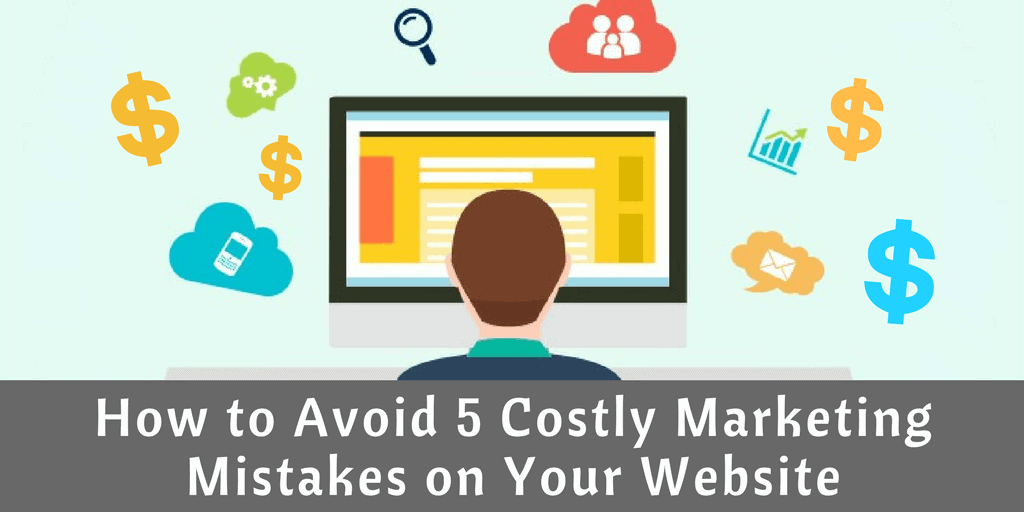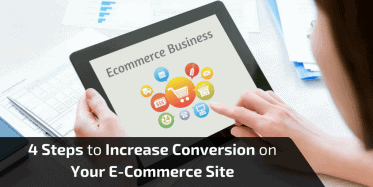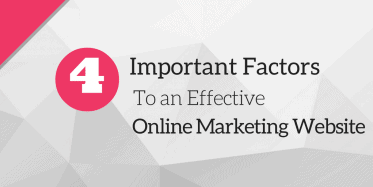How to Avoid 5 Costly Marketing Mistakes on Your Website
Digital marketing has been around for at least three decades. Marketing practices never stop advancing. We’ve seen trends go from floppy disk mass mailings to personalized ad displays and marketing automation. Surprisingly, despite upward changes in technology, many businesses still stubbornly follow common non-productive (and even counter-productive) practices. According to the Bureau of Labor Statistics (2016), 50% of small businesses failed in the first four years. Of all survivors, 76% struggled with their marketing operations. Each business has its own problems, yet there are similar failure patterns that are regularly ignored.
1. Careless launching

To find the right promotional practice, testing is the key. For instance, by showing both original and modified versions to visitors, A/B test provides info on whether a change in homepage layout can yield an increased conversion rate (percentage of visitors who click and buy). Thus, if the term “A/B test” is not trending among your marketing team, you are lost.
We know that even the biggest corporation can’t test everything. That’s when marketing research comes into practice. After all, it’s better to go treasure hunting with a map. You might not notice but many valuable market insights are available for free:
- Think with Google: Marketer’s Almanac provides statistics on seasonal customer behaviors.
- American Fact Finder offers U.S. census data filtered by age, income, race, time and location.
- Nielsen’s MyBestSegment specifies statistics on demographic and lifestyle of certain areas.
- MakeMyPersona simulates your buyers’ personas based on your answers to questions regarding ideal customers.
- Pew Research Center hosts various researches on economic conditions, political opinions, social media usages, etc.
- Social Mention is a real-time social media search engine that tells you how and where your customers are gossiping.
2. No long-term plan
This is where you to recall the purpose of your online marketing campaigns. Attracting customers and driving traffic mark the beginning of the process.
- How many visitors actually subscribe to your newsletter?
- How many subscribers purchase using the received discount code?
- How many buyers repurchase?
- Do you have a conversion funnel that covers the process from planning to measuring?
Stopping at attracting customers is like forgetting everything in your cart when you go home from the grocery store.
Going online is just another way to better manage your customer relationships. You will need a well-coordinated, long-term plan to grab the money that is scattering on the floor.
3. Abandoned buyers
The glamour of growing your customer base usually overshadows the importance of customer retention. The job of marketers does not stop at persuading customers to buy once, but to get them engaged with the brand. In fact, it’s 5 times costlier to attract a stranger than to keep a frequent client. Plus, new buyers on average only account for around 20% of revenue.
So exactly what can be done to make them stay? You should have heard about conventional actions like sending discount cards or store credit for the next purchase. How about personalizing your relationship with customers, e.g. quickly respond to customers’ comments on your fan page, call them after the sale for feedback, or follow their public social media profile? This is even easier if you run a small local business since it’s more likely for you to interact and establish an off-screen relationship with your customers.
4. Ignored or misinterpreted performance measures
Let’s assume you introduced your business to online audiences via a mobile-friendly website and popular social networking sites. Now you have a handful of performance indicators to review:
- Engagement on website: Basically, how deep is the customers’ love for your website, including subscription rate, time spent, return rate, etc.
- Traffic Sources: You can save a lot of resources knowing how customers arrive at your site. The ultimate goal is to boost conversion rate from any traffic source while sustaining the performance of others.
- Online Campaigns: There are specific measures for the effectiveness of an investment online, e.g. cost per click, click-through rate, cost per acquisition, etc.
- Social Interactions: How popular are you on social media sites? Fortunately, most popular platforms (Facebook, Pinterest, YouTube, etc.) provide on-site analytics, making it easier for the administrator to measure performance.
- Landing Page Conversion Rates: How many visitors actually follow your intended path and click to buy? Is your content attractive enough?
- Organic Searches (visit guided by search engines): This is where you measure the success of your SEO efforts. The figures requiring special attention include: number of visitors guided by search engines, number of buyers assisted by search engines, and percentage of traffic driven by branded keywords and unbranded keywords.
- Mobile Traffic: As most users are shifting to mobile devices for shopping, it’s better to study such traffic separately. Like traditional web engagement measures, you should consider and focus on visitors’ behaviors on their portable devices.
5. Messy content management
Content is the bait of your digital marketing campaign. Developing relevant content is considered the most sustainable and effective way to attract and retain audiences. For example, as a fashion retailer, have you regularly updated your blog posts on fashion trends and featured looks? As a restaurant owner, have you ever posted photos of your new menu items or your regular guests? Well-controlled content marketing greatly boosts confidence. Customers are 6 times more likely to trust a brand that produces relevant content over a brand that only focuses on advertising (Seven 2015).
Surprisingly, according to the Content Marketing Institute (2016), only 37% of businesses in the U.S. have documented marketing strategies. The majority (44%) only verbally formulate a strategy and 12% execute without any plan at all. In the same survey, it is also proven that written content strategy generates better results in tactics, social media platforms and paid advertising methods. So, first, write down your content marketing strategy.
Next, consider which platform will best approach your target group. The four most effective tactics are e-newsletters, in-person events, photos, and social media content. For small businesses with limited budgets, it is recommended to start with short, informative photo posts on social media, which are then developed into a detailed blog post on independent websites.
Another question is: “What is the best length for an effective article.” Big words, complex sentences and long paragraphs often bore customers. Instead of writing a 5,000-word post, break it into 3 or 4 separate articles. With a series approach, readers will return to learn more. Around 2,000 words is the average length of a first-page article ranked by Google. However, remember to test different scenarios with your audiences, as the world average might differ greatly from a national and local average!
Last, but not least, don’t ignore the ‘marketing’ part of ‘content marketing.’ Given the daily load of information customers are exposed to, you can’t expect your message to go viral without a concentrated marketing effort. Try to expand your internet presence by involving social media influencers, affiliating with other blogs or websites or actively asking your audiences to share. Put yourself in your visitors’ shoes to create a better site experience. For example, encourage them to re-tweet by incorporating direct Twitter links to key quotes and sentences. Win – win!
To sum up, we have talked about researching (to avoid careless launching), planning (to avoid short-term mindset), keeping customers (to save costs), controlling (to sustain performance) and managing content (to generate trust). Mistakes are unavoidable; and luckily, it is never too late to change. If you have identified several issues and need assistance, we are ready to give a hand. Please feel free to reach out to our digital marketing team at 612-590-8080.













